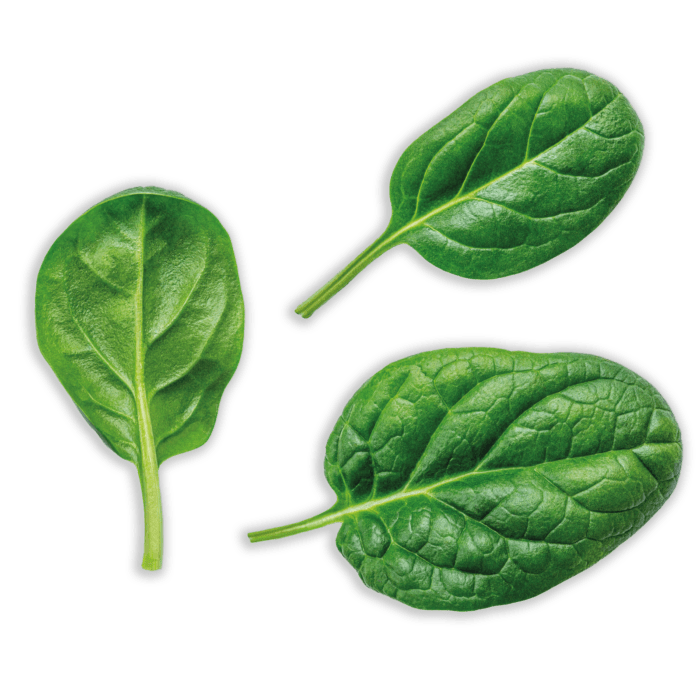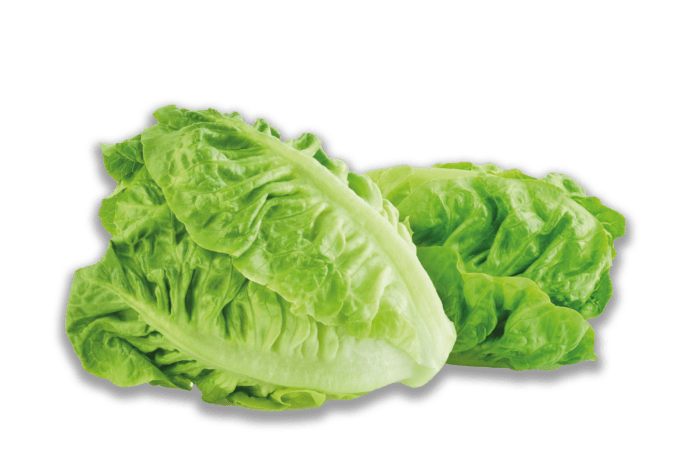Chew on this
Nitrates from leafy greens may improve oral health with fewer side effects compared to traditional mouthwashes and could help combat gum disease and tooth decay.
Words: Mia Cousins Burleigh, and Siobhan Paula Moran. Photography: Shutterstock.com
More than half the adult population in the UK and US1 have gum disease. Typical treatments include mouthwash2 and in severe cases, antibiotics3. These treatments have side effects, such as dry mouth, the development of antimicrobial resistance4 and increased blood pressure5.
However, research has indicated that a molecule called nitrate6, which is found in leafy green vegetables, has fewer side effects and offers greater benefits for oral health. And it could be used as a natural alternative for treating oral disease.
Inadequate brushing and flossing leads to the build-up of dental plaque7, a sticky layer of bacteria, on the surface of teeth and gums. Plaque causes tooth decay and gum disease. Sugary and acidic foods, dry mouth, and smoking can also contribute to bad breath, tooth decay and gum infections.
The two main types of gum disease are gingivitis and periodontitis. Gingivitis8 causes redness, swelling and bleeding of the gums. Periodontitis9 is a more advanced form of gum disease, causing damage to the soft tissues and bones supporting the teeth.
Periodontal disease can, therefore, lead to tooth loss and, when bacteria from the mouth enter the bloodstream, can also contribute to the development of systemic disorders10 such as cardiovascular disease, dementia, diabetes and rheumatoid arthritis.
Leafy greens may be the secret

Leafy greens and root vegetables are bursting with vitamins, minerals, and antioxidants11 – and it’s no secret that a diet consisting of these vegetables is crucial for maintaining a healthy weight, boosting the immune system, and preventing heart disease, cancer and diabetes12. The multiple health benefits of leafy greens are partly because spinach, lettuce and beetroots are brimming with nitrate13, which can be reduced to nitric oxide by nitrate-reducing bacteria inside the mouth.
Nitric oxide is known to lower blood pressure14 and improve exercise performance15. However, in the mouth, it helps to prevent the overgrowth of bad bacteria and reduces oral acidity16, both of which can cause gum disease and tooth decay.
As part of our research on nitrate and oral health, we studied competitive athletes17. Athletes are prone to gum disease18 due to high intake of carbohydrates – which can cause inflammation of the gum tissues – stress, and dry mouth from breathing hard during training.
Our study showed that beetroot juice (containing approximately 12 millimole19 of nitrate) protected their teeth from acidic sports drinks and carbohydrate gels during exercise – suggesting that nitrate could be used as a prebiotic by athletes to reduce the risk of tooth decay.
Nitrate offers a lot of promise as an oral health prebiotic20. Good oral hygiene and a nitrate-rich diet could be the keys to a healthier body, a vibrant smile and disease-free gums. This is good news for those most at risk of oral health deterioration such as pregnant women21 and the elderly22.
In the UK, antiseptic mouthwashes containing chlorhexidine23 are commonly used to treat dental plaque and gum disease. Unfortunately, these mouthwashes are a blunderbuss approach to oral health, as they indiscriminately remove both good and bad bacteria and increase oral acidity, which can cause disease.
Worryingly, early research also indicates that chlorhexidine may contribute to antimicrobial resistance24. Resistance occurs when bacteria and fungi survive the effects of one or more antimicrobial drugs25 due to repeated exposure to these treatments. Antimicrobial resistance is a global health concern26, predicted to cause 10 million deaths annually by the year 2050.
In contrast, dietary nitrate is more targeted. Nitrate eliminates disease-associated bacteria, reduces oral acidity and creates a balanced oral microbiome27. The oral microbiome refers to all the microorganisms in the mouth. Nitrate offers exciting potential as an oral health prebiotic28, which can be used to prevent disease onset or limit disease progression.

How many leafy greens for pearly whites?
So how much should we consume daily? As a rule of thumb, a generous helping of spinach, kale or beetroot at mealtimes contains about 6-10 mmol of nitrate and offers immediate health benefits.
Work we have done with our collaborators has shown that treating plaque samples29 from periodontal disease patients with 6.5 mmol of nitrate increased healthy bacteria levels and reduced acidity. For example, consuming lettuce juice30 for two weeks reduced gum inflammation and increased healthy bacteria levels in patients with gum disease.
Growing evidence suggests that nitrate is a cornerstone of oral health. Crunching on a portion of vegetables at mealtimes can help to prevent or treat oral disease and keeps the mouth fresh and healthy.
Mia Cousins Burleigh is a Lecturer and Siobhan Paula Moran a PhD candidate at the School of Health and Life Sciences, University of the West of Scotland.
This article was first published by The Conversation31.
References
- Effects of a Novel Dental Gel on Plaque and Gingivitis: A Comparative Study – US Library of Medicine, PubMed
- Effects of Chlorhexidine mouthwash on the oral microbiome – nature.com Scientific Reports
- Dentistry treatments for gingivitis and periodontal disease – UK-VET, The Veterinary Nurse
- Resistance Toward Chlorhexidine in Oral Bacteria – Is There Cause for Concern? – US National Library of Medicine, PubMed
- Effects of Chlorhexidine mouthwash on the oral microbiome – nature.com Scientific Reports
- Nitrate as a potential prebiotic for the oral microbiome – nature.com Scientific Reports
- Nitrate as a potential prebiotic for the oral microbiome – nature.com Scientific Reports
- Periodontal disease and its prevention, by traditional and new avenues (Review) – Spandidos Publications, Experimental and Therapeutic Medicine
- Periodontal disease and its prevention, by traditional and new avenues (Review) – Spandidos Publications, Experimental and Therapeutic Medicine
- Periodontitis and systemic disease – nature.com, BDJ Team
- How fad diets may jeopardize your oral well-being: The hidden consequences – Science Direct
- The effect of green leafy and cruciferous vegetable intake on the incidence of cardiovascular disease: A meta-analysis – Sage Journals, JRSM Cardiovascular Disease
- Nitrate as a potential prebiotic for the oral microbiome – nature.com Scientific Reports
- Nitric oxide deficiency is a primary driver of hypertension – Science Direct
- Nitrate-rich beetroot juice offsets salivary acidity following carbohydrate ingestion before and after endurance exercise in healthy male runners – PLOS One
- Nitrate-rich beetroot juice offsets salivary acidity following carbohydrate ingestion before and after endurance exercise in healthy male runners – PLOS One
- Nitrate-rich beetroot juice offsets salivary acidity following carbohydrate ingestion before and after endurance exercise in healthy male runners – PLOS One
- The Significance of Oral Inflammation in Elite Sports: A Narrative Review – US National Library of Medicine, PubMed Central
- An easy guide to mmols – Nursing Times
- Nitrate as a potential prebiotic for the oral microbiome – nature.com Scientific Reports
- Periodontitis and Pregnancy – News Medical, Life Sciences
- Frailty, Aging, and Periodontal Disease: Basic Biological Considerations – US National Library of Medicine, Pub Med Central
- Effects of Chlorhexidine mouthwash on the oral microbiome – nature.com Scientific Reports
- Resistance Toward Chlorhexidine in Oral Bacteria – Is There Cause for Concern? – US National Library of Medicine, Pub Med
- Antimicrobial resistance: a global multifaceted phenomenon – US National Library of Medicine PubMed Central
- Global burden of bacterial antimicrobial resistance in 2019: a systematic analysis – The Lancet
- Global burden of bacterial antimicrobial resistance in 2019: a systematic analysis – The Lancet
- Nitrate as a potential prebiotic for the oral microbiome – nature.com Scientific Reports
- Nitrate as a potential prebiotic for the oral microbiome – nature.com Scientific Reports
- Nitrate-rich diet alters the composition of the oral microbiota in periodontal recall patients – Journal of Periodontology
- Eating leafy greens could be better for oral health than using mouthwash – theconversation.com
Tags: Greens, health, Mouthwash, Nitrates, Plaque, Study, UK, US


You must be logged in to post a comment.